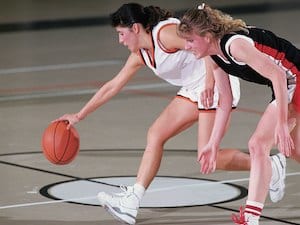
MONDAY, June 11, 2018 (HealthDay News) — Many teens and young adults in the United States — particularly women and girls — are physically inactive, a new study reveals.
This is a concern, experts say, because exercise is a component of lifelong good health.
Girls, black people and kids from poorer families are least likely to meet exercise guidelines, according to the report on teens and young adults aged 12 to 29.
“We really need to find ways to keep adolescents physically active and be able to sustain that physical activity into young adulthood,” said lead researcher Dr. Sarah Armstrong.
Exercise is essential for preventing cardiovascular disease and diabetes in adulthood, said Armstrong, an associate professor of pediatrics at Duke University in Durham, N.C.
Armstrong added that attempts to boost physical activity should target young girls and women, especially minorities, and girls and young women living in poverty.
Physical activity is “powerful, inexpensive, vitalizing medicine for us all,” said Dr. David Katz, director of the Yale-Griffin Prevention Research Center in Derby, Conn.
“This paper indicates we have much work to do to get that medicine to go down more often, and more equitably,” added Katz, who wasn’t involved in the study.
For the study, Armstrong and her colleagues analyzed responses of nearly 9,500 teens and young adults who took part in the U.S. National Health and Nutrition Examination Survey from 2007 through 2016.
The participants were asked about their exercise habits. Vigorous exercise involved activities like running or playing basketball continuously for 10 minutes or more. Moderate activity was 10 minutes or more of activities such as brisk walking, bicycling, swimming or volleyball.
Overall, females were less active than males. At the high end, almost 90 percent of white teen boys said they got some physical activity. At the low end, just 45 percent of black women in their late 20s reported any exercise.
The study revealed that among those who were active, young black men exercised the most — 78 minutes a day. Black women aged 25 to 29 exercised the least — 33 minutes a day.
For teens, recent guidelines recommend at least 60 minutes of moderate to vigorous activity a day. Adults should get 150 minutes a week of moderate physical activity or 75 minutes a week of vigorous physical activity, or a mix of the two, Armstrong said.
Katz stressed that exercise is essential for longevity.
“We have known for 25 years or more that tobacco use, poor diet and lack of physical activity were the leading root causes of premature death in the United States,” said Katz, a past president of the American College of Lifestyle Medicine.
With fewer people smoking, he added, poor diet and lack of exercise now need to be addressed.
Poor eating habits and lack of exercise in your teens and 20s will likely affect your health long-term, Katz added.
“We know this means a higher future risk of obesity and a wide array of chronic diseases, from diabetes, to cancer, to dementia,” he said.
The disparities in exercise revealed in the study aren’t easy to account for, Katz said.
“We are left to guess at which disparities matter most,” he noted. “Is it safe streets and neighborhoods? Access to gyms and dance classes? The school sports program? Or is it access to information or variation in cultural priorities?”
In all likelihood, it’s all of the above, Katz said.
The report was published online June 11 in the journal JAMA Pediatrics.
More information
For more on exercise for teens, visit the U.S. Centers for Disease Control and Prevention.
